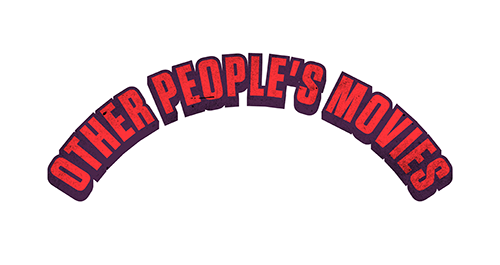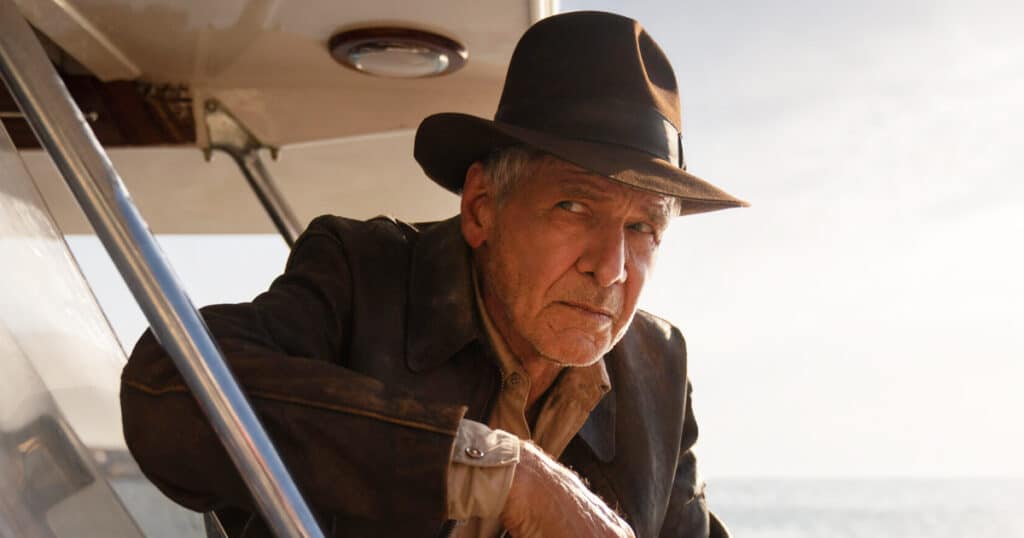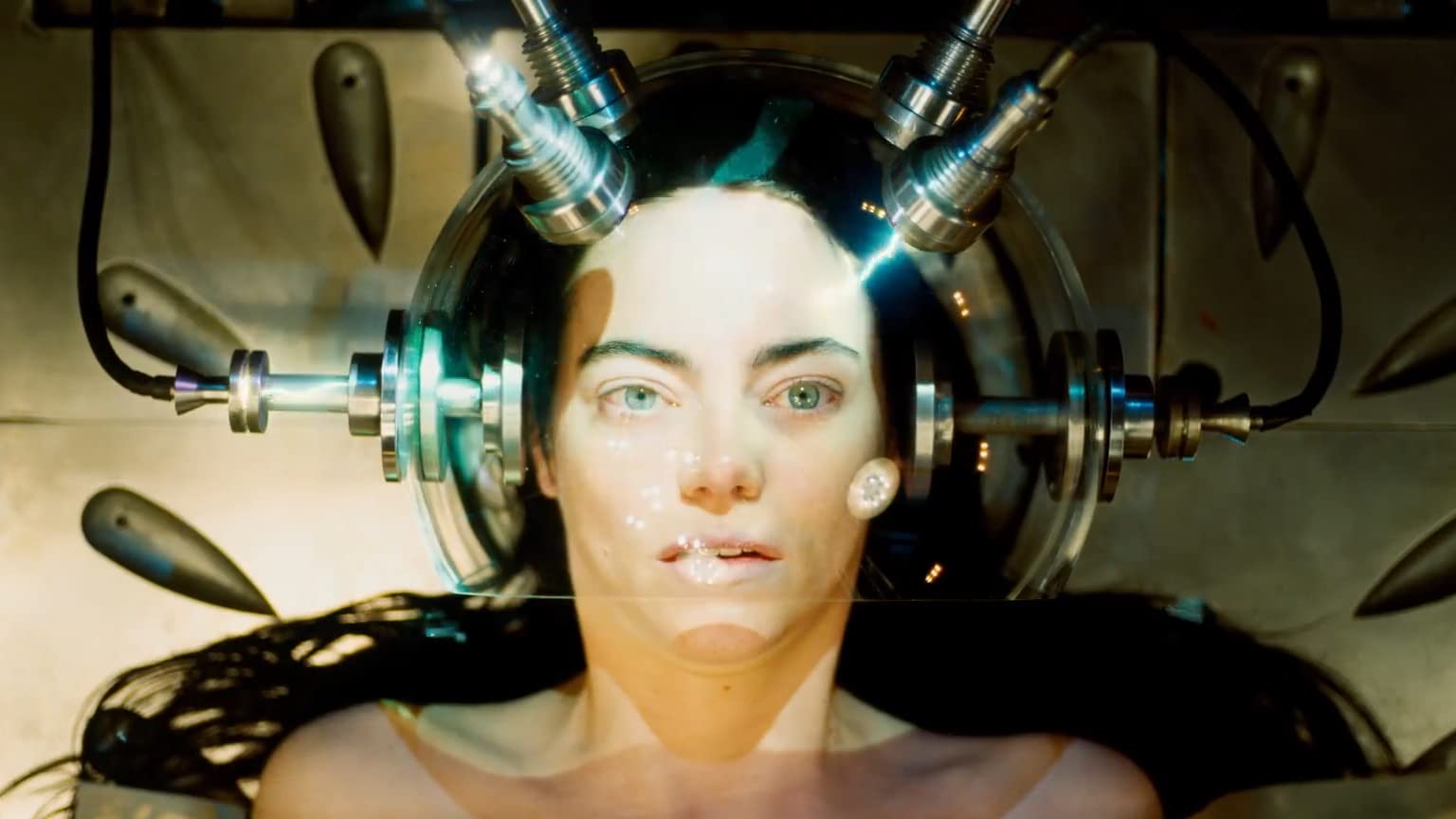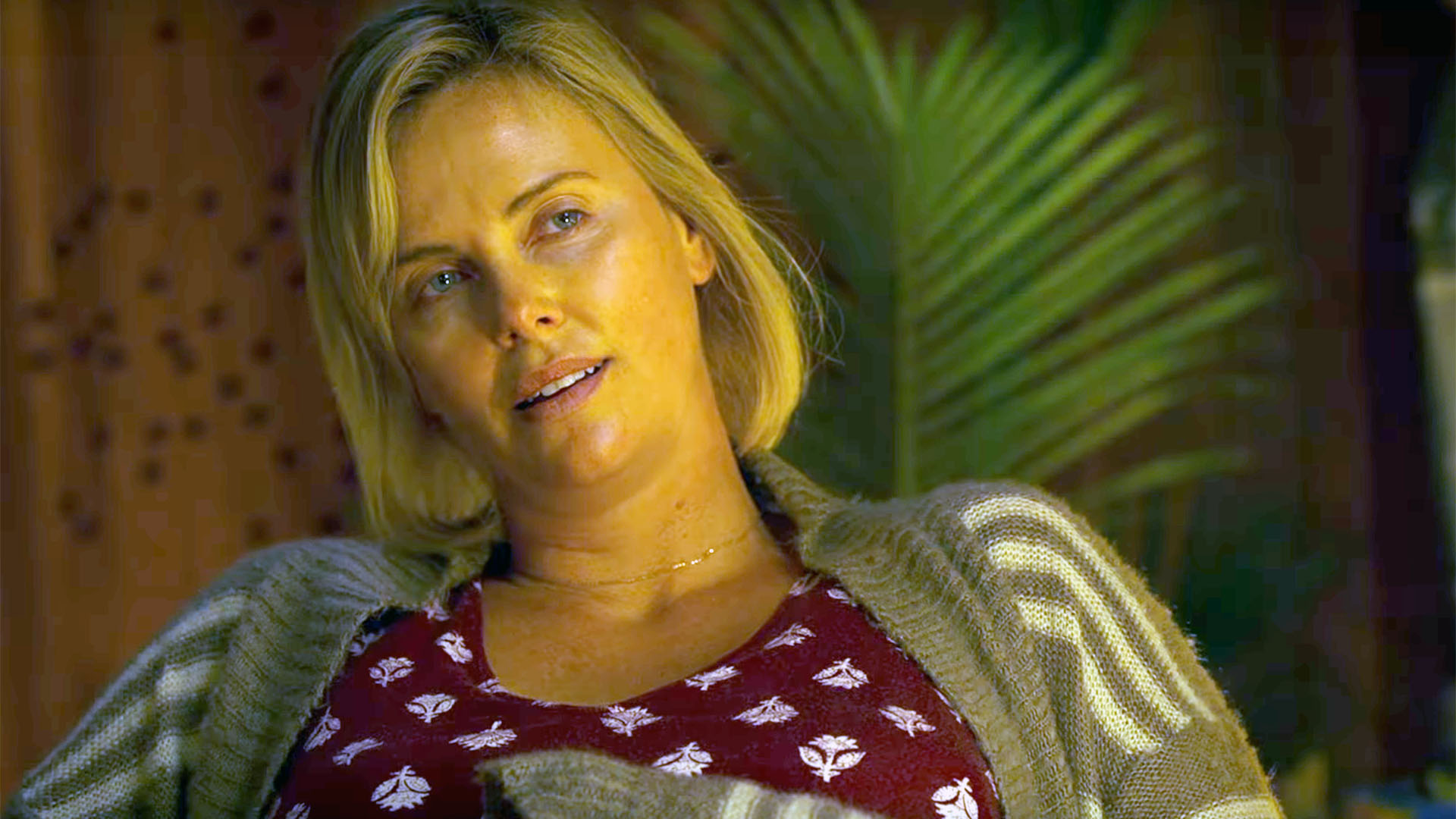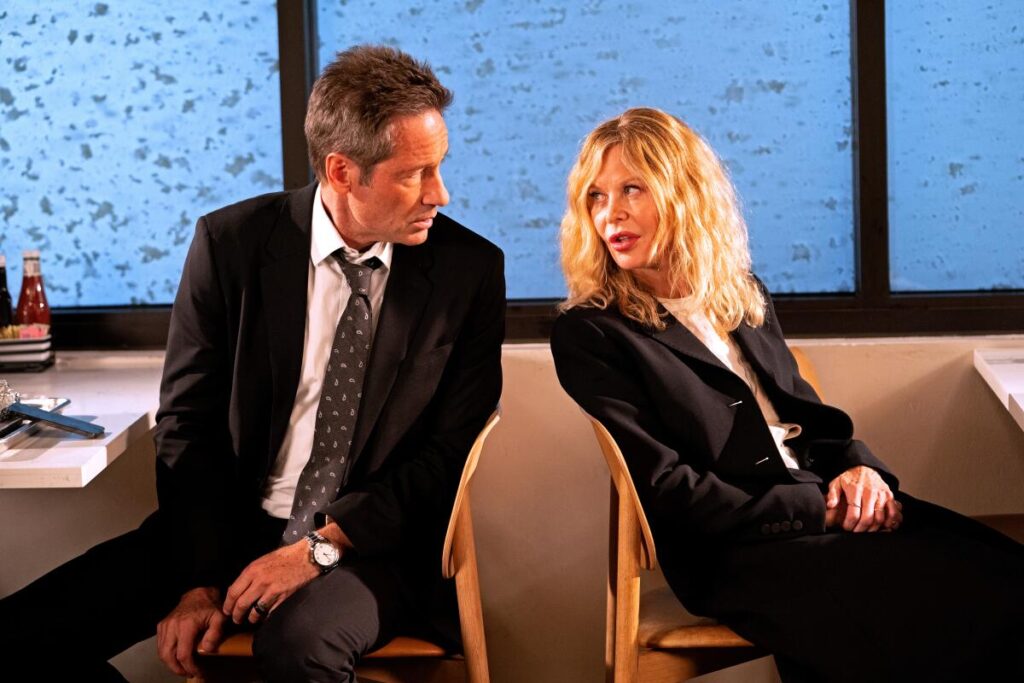
Meg Ryan stars in and directs What Happens Later, a wholly endearing and minimalistic romantic comedy. Poorly received by both audiences and critics, the film is far better than it has been given credit for being and deserves to have its day in the sun. Unfortunately, it might be a bit too unconventional for Ryan’s primary rom-com fanbase to fully grasp or appreciate.
Ryan and David Duchovny play former flames whose paths cross over twenty-five years after the end of their relationship. Their flights are cancelled due to hazardous weather conditions and they are both stranded at the same airport. They slowly start to reconnect and old feelings—good and bad–resurface, begetting both great affection and uncomfortable tension. The longer they wait for their flights, the deeper their rediscovery of each other becomes. Eventually, it becomes apparent that their love for one another, and the pain that comes with it, is still entirely present.
Based on the stage play Shooting Star by Steven Dietz, the film has a very theatrical feel and not a conventionally cinematic one—something that probably played a hand in its abysmal reception. Unlike most of today’s popular movies, the meat of each scene in What Happens Later isn’t briefly reached through tight editing but rather through organically naturalistic conversations that unravel in their own time and are captured in lingering and observational takes. The movie feels real, and you’re easily invested in the characters because their interactions are so wholly lifelike.
The realism that dominates the film’s tone is sometimes cleverly balanced with moments of light absurdity and fantastical whimsey. They add to the overall feel-good nature of the film and soften the blow to some of its more serious moments. The consistently humorous tone always reminds us that we’re watching a romantic comedy, though it is a romantic comedy that explores love in a more mature and truthful manner than we’re accustomed to seeing in similar films.
What Happens Later’s success is entirely dependent on the abilities of and the chemistry between its two leads. The fact that Duchovny and Ryan’s vivacious, adorable, and seemingly effortless performances didn’t make waves with the general filmgoing public is beyond me. Their magical chemistry rivals Ryan’s classic parings with Tom Hanks in Sleepless in Seattle and You’ve Got Mail and Billy Crystal in When Harry Met Sally. The two are fascinating to watch, as their characters’ history and their shifting comfort/discomfort with one another are always apparent and believable. There is not a false note to be found in either Ryan or Duchovny’s outstanding work.
What Happens Later showcases Ryan’s abilities as a director splendidly. Aside from a select few cutesy moments that feel tacked on for audience appreciation, she doesn’t allow any contrivances or cliches to falsify the honesty of the movie’s emotional core. Her restraint is exemplary, as the film never announces her presence behind the camera. Her and cinematographer Bartosz Nalazek’s camera set-ups are finely composed and minimal, beautifully capturing the actors and their relationship to each other and their environment with simplicity and care. It is an actor’s movie, and Ryan’s assured but inconspicuous filmmaking clearly understands that by revolving around the rhythm of the performances rather than its own forced style.
I was surprised at how much I liked What Happens Later, as its negative word-of-mouth pretty much had me convinced to skip it. I’m glad I wound up giving the movie a chance, however, because it’s one of the most pleasant surprises of its year. Solid and refined filmmaking, truthful writing, and truly wonderful performances converge to create an endlessly charming movie that completely and refreshingly feels alive.
GRADE: A-
